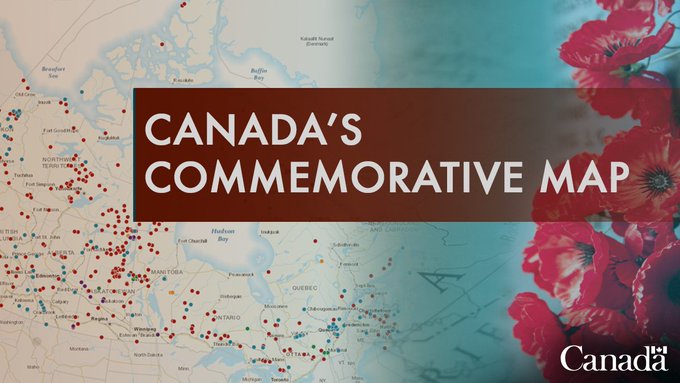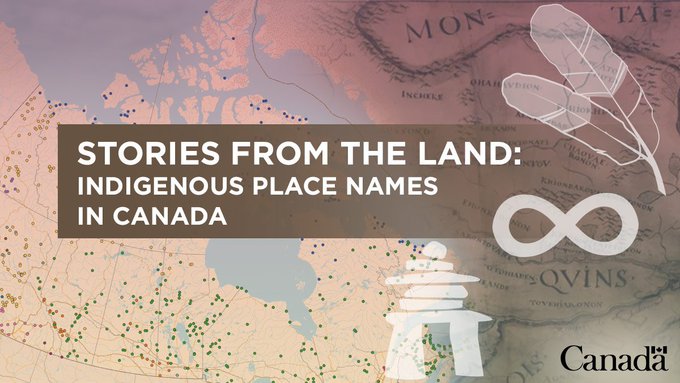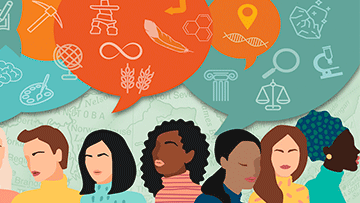The Geographical Names Board of Canada Celebrates 125 Years

Canada’s national coordinating body for geographical names celebrated its 125th anniversary in 2022. Since 1897, the board has worked to establish standards and practices for the naming of Canada’s places and features, and its members have approved over 350,000 official names across our vast geography.
Transcript
How do the places we call home get their names?
Since 1897, places in Canada have been given names through the Geographical Names Board of Canada.
The GNBC includes members from each province and territory and some federal departments.
This year, the Geographical Names Board of Canada celebrates its 125th anniversary.
Place names help us get around by providing an official reference for maps, and they also hold cultural information about the people who live there.
Indigenous peoples were the first to live here and named the land and its features.
As Europeans settled the land, they also gave their own names reflecting their cultures and history.
Colonial policies and the assimilation of Indigenous culture is a dark part of our country’s history.
The impacts of this are still felt today.
The Government of Canada is committed to Reconciliation.
Reconciliation is about all Canadians – Indigenous Peoples and non-Indigenous Canadians alike – working together to achieve a fundamental shift in the way we perceive and interact with each other for the benefit of all Canadians.
Members of the Geographical Names Board of Canada recognize the importance of reflecting Indigenous history through place names.
The Board is working with Indigenous communities to restore traditional place names and reflect the culture of the peoples who lived there.
Place names and landscapes are not static, and they evolve over time and through cultural shifts.
The Mackenzie River in the Northwest Territories has seven approved names in the languages of the people who live along Canada’s longest river system.
From coast to coast to coast, official place names are as unique as the people who live there.
From Indigenous names with cultural significance to...quirky ones and everything in between, place names are important.
They document Canada’s cultures and history, and help us navigate Canada's immense landscape.
The Canadian Geographical Names Database is the official national repository for geographical and place names in Canada.
Along with cultural and historical significance, place names provide a widely recognized reference for maps, GPS, and emergency response.
To learn more about some interesting place names, explore our interactive maps, which commemorate Canada’s participation in armed conflicts, highlight the history and evolution of Indigenous place naming, and recognize places named after women.
Find out more about the Geographical Names Board of Canada and place naming by visiting our website at nrcan.gc.ca/GNBC-125
Learn more about the Geographical Names Board of Canada by watching our new video about official geographical names across Canada, with a particular focus on Indigenous place names.
Message from the Chair
As the Chairperson of the Geographical Names Board of Canada (GNBC), I am proud to announce that 2022 is the 125th anniversary of Canada’s national coordinating body for official place names.
This milestone anniversary year provides an opportunity to reflect on how place naming has changed over time, and on how our understanding of Canada has broadened. The GNBC’s ongoing work reviewing, researching, and approving place names is more visible now than ever before. Our present-day activities are especially relevant given the changing societal attitudes toward the suitability of names that we use for cities, mountains, lakes and other features on the landscape. The GNBC’s work with Indigenous place names is particularly important given their role in supporting the preservation, revitalization and strengthening of Indigenous histories, languages and cultures, the linkage to the United Nations Declaration of the Rights of Indigenous Peoples, and in deepening our understanding of where we live.
Please join the federal, provincial and territorial members of the GNBC over the coming year as we celebrate geographical naming in Canada. If you would like further information on geographical naming and the activities of the GNBC, please explore our webpages or contact the GNBC Secretariat at Natural Resources Canada.
Connie Wyatt Anderson, Chairperson
Geographical Names Board of Canada
Learn more about the GNBC and geographical names in Canada
Geographical names surround us and capture the cultural and historical narrative of Canada from past to present. They are especially significant in preserving Indigenous cultures and languages. The policies and procedures of the GNBC have evolved throughout its history, from the early days of explorers recording handwritten names on paper maps, to present day digital communication and interactive maps.
Interesting Facts on Canadian Geographical Names
- Listen to over 400 audio files from the Innu Nation of Labrador of their geographical names.
- On National Indigenous Peoples Day, we’re proud to launch an Indigenous Geographical Names Dataset and to celebrate the diversity of Indigenous language in Canada.
- See the 1897 Order in Council establishing the Geographic Board of Canada.
- In 2012, Quebec’s Commission de toponymie celebrated its 100th anniversary. Since 1998, the Banque de noms de lieux du Québec can be searched using an on-line tool.
- Despite popular debates as to whether the territory is called “The Yukon” or “Yukon”, the territory name has never officially been “The Yukon”. The territory was officially named “Yukon Territory” until 2003, when the named was changed to “Yukon” as part of devolution.
- Pekwachnamaykoskwaskwaypinwanik Lake, Manitoba: This lake is a Cree name that means ‘Where the wild trout are caught by fishing with hooks’.
- Anhluut'ukwsim Laxmihl Angwinga'asanskwhl Nisga'a, British Columbia: One of the longest place names in Canada, a Nisga'a name and alternate name for Nisga'a Memorial Lava Bed Park. The park is a memorial to 2,000 Nisga'a ancestors who lie buried under Canada's most recent lava flow, c1750.
Page details
- Date modified:


